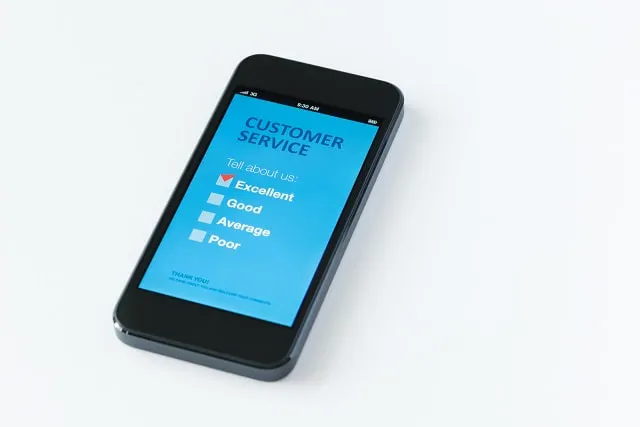With so many excellent survey platforms available, it’s easier than ever to conduct market research online and even with mobile users. On mobile devices, for example, companies can prompt users to complete a survey through SMS marketing, mobile popups, and more. This greater access to consumers has created a world in which surveys are attached to many of the brand interactions we have when using websites, email, mobile apps, and other platforms. In order to collect high-quality data, many businesses are using survey design best practices to optimize their questions and provide an engaging survey experience.
in this post, we’ll start by reviewing the 12 major categories of survey questions in order to better understand how they’re used and why they’re useful to include. This can help you identify the best question format to use for each topic and also generate ideas about your survey design and layout. To help you create a more effective survey, we’ve also included 38 relevant best practices, tips, and examples that have proven to be effective. Each survey represents a unique opportunity to gain new insights into customer preferences, behavior, and sentiment. We hope you find some great ideas to help you build effective and engaging surveys.
- General Survey Questions
- Categorical (Nominal) Questions
- Interval (Ratio) Questions
- Survey Question Tips & Best Practices
General Survey Questions
Open-ended questions use a free-form survey format that includes an open-text box for collecting answers. This gives respondents the ability to formulate a unique response and capture the entry in their own words. As a popular method for collecting qualitative data, open-ended questions are also an excellent survey question choice when canvassing a particular topic to identify customer perceptions.
Why it’s useful: This question type forms the basis of qualitative market research.
Closed-ended questions are used to collect quantitative data and are generally presented with multiple-choice options but may also include the ability to write in a specific answer. The key consideration when designing a close-ended question is to make sure that a limited set of answers is collected. The respondents may be able to choose a yes or no option or provide an answer such as their year of birth.
Why it’s useful: A closed-ended question can provided quantitative data for a particular topic.
3. Picture (Image) Choice Questions
One nice way to break up the repetition of text-only questions is to provide images for your audience to choose from. These picture choice questions are excellent for collecting branding and product development feedback to better understand which visual markups are more appealing. Images can also be used to increase survey engagement by presenting respondents with visual cues to replace standard text entries.
Why it’s useful: Images are a popular and engaging survey question format for mobile-friendly surveys.
Demographic questions are often included in surveys as a way to better understand an audience and categorize responses. Since these questions are of a personal nature, they are often marked as optional and are an excellent resource when defining a target market and creating buyer personas. Some popular demographic categories include gender, age, ethnicity, and education level.
Why it’s useful: Demographic information is vital for understanding the makeup of an audience.
5. Filter (Contingency) Questions
Contingency questions, also called skip logic or filter questions, are used to guide a survey taker through a series of interconnected paths. New questions are presented based on the answer to a previous question, which gives the survey designer the ability to filter respondents into specific categories. A survey designed with contingency questions may take some additional pre-planning but can increase the quality of the collected data.
Why it’s useful: Contingency questions help filter respondents in real-time and collect highly relevant answers.
Categorical (Nominal) Questions
6. Dichotomous (Yes/No) Questions
Dichotomous questions, commonly known as yes or no questions, are a specific type of closed-end question format that allows only a clear choice between two answers. The answers are usually presented as yes or no and may also include other fields such as “not relevant” or “prefer not to answer” in some cases. The use of dichotomous questions is very popular as a way to capture quantitative data based on clear opinions.
Why it’s useful: A yes or no question can help remove ambiguity and ensure clear responses are collected.
In its most basic form, a multiple choice question will present at least two answers and allow respondents to choose one. As you will see below, checkbox questions can be used to allow for multiple selections at once. Selecting pre-vetted survey answers ahead of time allows survey designers to better differentiate between information they have already collected from previous market research or internal data.
Why it’s useful: Multiple choice questions will limit answers to a common dataset that can be quantitatively analyzed.
A checkbox question is a specific format for a multiple-choice survey question. Instead of simply presenting multiple answers, the question will include checkboxes that allow multiple answers to be collected simultaneously. In some cases, the survey designer may also include a write-in field so the survey taker can add another option not presented within the survey.
Why it’s useful: Checkbox questions are an excellent choice when assessing which brands or products an audience uses.
Interval (Ratio) Questions
Likert scale questions are used to gauge the degree to which someone likes or dislikes a chosen topic. The format uses a five-point or seven-point scale that always includes a mid-point option for those respondents who do not have a strong opinion on a question. This question style is an excellent choice when analyzing complex topics such as political affiliation or dietary preferences.
Why it’s useful: The Likert scale provides a quantitative measurement of the degree of agreement or disagreement.
10. Rating and Ranking Questions
A rating question asks a respondent to indicate their preference for a particular topic by choosing a rating from a scale. The rating range can be chosen based on the needs of the survey analysis, using something like a scale of 1-10 or 0-5. A very similar type of question is called ranking, and provides several choices together on a grid and asks respondents to rank them in order of preference.
Why it’s useful: Understanding the degree of preference can be especially helpful during survey analysis.
11. Cumulative (Guttman) Scale Questions
Similar to the Likert scale, the Guttman scale provides a unidimensional measurement for understanding the degree of preference from survey respondents. Also called a cumulative scale, this survey format uses a series of yes/no questions that are presented in a particular order. Sentiment can then be calculated based upon how many questions the respondent answers and the number of yes or no responses.
Why it’s useful: Experimenting with different unidimensional scales allows analysts to fully explore a topic.
A matrix, or grid, question allows you to collect a lot of information about a particular topic in an easy-to-read format. The standard presentation will usually include a core question such as rating the quality of an event or value received from a product or service. This question is then followed by a grid containing checkboxes that the respondent can fill in for a number of provided subtopics.
Why it’s useful: Matrix questions allow you to collect many data points with minimum of survey formatting and design.
Survey Question Tips & Best Practices
1. Define a clear goal for each survey. When constructing a new survey, it can be tempting to simply collect as much data as possible. This would be a mistake, however, because the survey design can have a major impact on the effectiveness of data analysis and the ability to draw clear conclusions. One of the best ways to prepare is by defining a clear goal for each survey and choosing questions that support it.
2. Place personal questions at the end of the survey. Demographic questions can be placed at the beginning, middle, or end of a survey with effective results. One common suggestion, however, is to place questions that are particularly personal or sensitive near the end of the survey. This is due to the fact that people generally don’t like to answer these types of questions and may be more inclined to exit or close the survey if they are presented too early.
3. Choose an optimal survey length. A general rule of thumb when designing a survey is to allow for it to be completed within 10 minutes. This is an optimal amount of time that is not so long that you are likely to get lower completion rates. You may even want to consider micro surveys and formats that take 5 minutes or less to complete as a way to maximize participation and increase the number of survey completions.
4. Set a target audience for your survey. Audience targeting should be an essential component of any survey strategy. Without proper targeting, it’s impossible to match your survey with the right audience and collect quality and relevant data. Creating buyer personas and using other tools such as research panels and previous survey data will help define the right audience for each survey you create.
5. Use simple and direct language. A survey should never be so complex that it confuses respondents or leads to poor data collection. Always use the most direct and basic language possible for each survey question. While designing the format, consider the taker’s perspective and choose words that are easy to understand and a question flow that follows a logical pattern.
6. Provide incentives for survey participation. When you are building an especially critical survey, it may be beneficial to include an incentive when sharing it with your audience. This can be particularly helpful when conducting customer satisfaction surveys and asking detailed questions about a customer’s experience. Whenever an incentive is used, be sure to review your questions and make sure you are getting maximum value from the survey.
7. Make sure every question counts. In order to respect your customers’ time, it’s always a good practice to use the minimum number of questions possible when collecting your survey data. You certainly don’t want to sacrifice any important questions, but there may be ways to combine questions or eliminate any survey items that are redundant and don’t add unique value. Proper planning and survey testing can help a great deal in narrowing down your list of questions.
8. Avoid the use of leading questions. A leading question is one that hints or directs a respondent to answer in a particular fashion. This is often driven by bias combined with poor survey design, which can unintentionally skew the results of your collected data. It’s important to make each question objective, direct, and free from any influence so that the survey captures true customer sentiment.
9. Break large concepts into individual questions. Including very long or complex questions can make it difficult for respondents to complete a survey. This can result in abandoned surveys or partial answers to your questions. One way to avoid this is by breaking down larger ideas into individual questions that are focused on a particular aspect of the topic.
10. Use appropriate survey response scales. Many of the survey question formats introduced above allow for the use of different response scales depending on the survey creator’s preference. When choosing a response scale, it’s important to include enough of a range to create a clear differentiation of sentiment, but not too much so as to make the results difficult to interpret. Another important factor to consider when displaying a range of selections is to choose the right default range that is displayed first, as this can also affect results.
11. Test your online survey. Some surveys have few questions and a highly compact design, while others can be complex and involve integrated survey logic. Depending upon your specific survey goals, you may want to take a structured approach to survey testing. There are many different ways to approach this, with one popular choice being to have stakeholders take the survey and work out any issues that become apparent.
12. Prepare for questions that do not apply to a respondent. There will almost certainly be times when not all the answers you provide for a multiple-choice question will apply to all respondents. Since it may not be possible to account for all these situations when designing your survey, it’s a good idea to include an additional selection that says “not sure” or “not applicable.” This will allow you to capture your other survey data but also better understand new information you didn’t expect.
13. Keep your answer options balanced. Multiple-choice questions are a helpful way to review a number of potential answers with a single question. When designing a survey question, always make sure that the provided answers are balanced and provide a useful range of responses. Answers that are too similar may not be useful during analysis and can make it harder to truly understand the results.
14. Make use of the funnel design technique. The funnel technique is a way of designing surveys so that broad and more-open ended questions are presented first. The questions then become more specific as the survey continues through to the end. This not only provides a logical structure to the survey but also helps familiarize respondents with the chosen topics.
15. Each question should have only one topic. In an effort to maximize the value of each question, it can be tempting to inquire about multiple topics at once. These are called double-barreled questions and usually include the word “and” to connect two different ideas. It’s best to avoid them entirely and instead focus each question around a simple and clear concept.
16. Avoid abbreviations, acronyms, and technical terms. Survey questions should always be clear, easy to read, and familiar to the audience. Therefore, it’s best to avoid any abbreviations or acronyms that may be confusing to someone who is not familiar with the terms. Questions should also be free of overly technical wording that might be difficult to understand.
17. Don’t use extreme absolutes. Words like “never” and “always” can be very polarizing, so it’s best to avoid them in your questions and individual answers. The main reason for choosing other words is the fact that respondents are unlikely to have such an extreme opinion about any one question. If you’re interested in determining the degree of sentiment, you may be better off using a question that presents a scale.
18. Speak your respondent’s language. While it’s important to use simple language and avoid words or phrases that are confusing, it’s also crucial not to oversimplify your questions. If market research has identified a target market, it’s possible to design your survey questions with language that is familiar to this audience. This may include asking questions about topics that are important to the group and including words they will understand.
19. Avoid grid-format questions in mobile surveys. Questions that are presented in grid format can provide tremendous value in the right situations but should be avoided most of the time. The main reason for this is that grid-format questions are usually not optimized for mobile devices and can be difficult to read. If you are planning any mobile-friendly surveys, it may be better to break these questions up into smaller pieces.
20. Do not use double negatives. A double negative happens when you use two negative words in the same sentence, such as the phrase “don’t not.” This can often happen unintentionally during the course of writing survey questions but can cause major problems for survey takers. A double negative is always confusing because it makes it difficult to understand the meaning of the question and how the respondent should respond.
21. Answers should be mutually exhaustive. Two answers are mutually exhaustive if they do not overlap in any way. Avoiding similar answers will help differentiate your respondents’ feedback and give you a clear and unambiguous set of data to review. When answers intersect too much, it not only makes it hard for a respondent to make a choice but also wastes valuable survey space that could be used to research another answer choice.
22. Limit scaled questions to seven options. This is an especially important point for matrix-style questions, where your respondent must review a number of different data points simultaneously. In these situations, it is best to provide a neutral rating, three negative scores, and three positive scores for the grid. Research has shown that using seven options on your scale provides a nice, wide range of potential scores without being overwhelming.
23. Fully label your rating scales. Another important point when preparing survey questions that include scales is to provide a complete label. Some surveys include a label only for the mid-point and endpoints, but this can sometimes be confusing and lead to fewer answers for the middle selections. In order to provide clear questions for your audience, always fully label the scales so it’s clear exactly what each value represents.
24. Images and video can help clarify questions. Some concepts can be difficult to communicate in a question using only words. Supplementing some questions with images or a video clip can help make them more engaging and easier to understand. Pictures and videos are especially powerful when collecting brand and product feedback when you can actually show a visual of the product or service.
25. Provide descriptions for sensitive questions. Asking for sensitive information such as someone’s income level or marital status can feel intrusive to the survey taker. Whenever you ask for this information, it can be helpful to include a short paragraph that explains why you are collecting this data. Describing how it can help improve customer experience and lead to better products or services can often lead to more responses.
26. Replace yes/no questions with multiple choices. Questions that ask for yes or no answers can be useful, but they can only indicate a binary response. One way to make your questions more useful is to use phrases such as “how much” when asking about a particular topic. You can then include multiple response options and capture more information beyond a simple yes or no answer.
27. Be consistent with your questions. As a person clicks through a survey they’ll become used to the way you’re presenting your questions. Formatting is important, and you should always strive to be consistent among your questions. This means using a standardized scale and providing a common number of answers for multiple-choice questions.
28. Place your questions in a deliberate order. Regardless of the specific goal for your survey, you should always choose a proper order for your questions. More open-ended questions should go at the beginning with specific or sensitive questions being moved to the end. You should also consider the context of each question and whether the question that comes before or after may influence the responses.
29. Make time to edit your surveys. Even after testing and releasing your survey, it may be necessary to go back and make additional edits. You should always review the existing survey data to better understand the number of responses and how your survey is performing. You may they want to rearrange some questions or change the answer options to improve the quality of responses.
30. Leave a thank you note for respondents. Rather than simply ending your survey with a final question, consider leaving a message for your respondents. People have taken time to fill out your survey and complete it all the way to the end. Writing a genuine message to thank them is a good practice, and you can also use that space to direct them to additional pages or content they might find helpful.
31. Provide clear navigation throughout the survey. When designing your survey questions, always review the survey features of your chosen platform to understand how your content will be presented. Consider the flow of the survey from the respondents’ perspective and make sure that all questions are clearly marked with instructions for scoring and where they should enter their answers. It may also be helpful to test the functionality of navigation buttons prior to releasing the survey.
32. Watch for survey fatigue. Survey fatigue happens when someones grows tired of a survey and may begin to answer questions randomly and without carefully considering the questions and possible responses. This can occur for a number of reasons, such as a survey that is too long, confusing questions, or simply a lack of desire to participate. You may notice signs of survey fatigue within your data, but it’s always best to avoid this situation by designing a survey that is concise, clear, and targeted to the right audience.
33. Clearly define your research intentions. Clear research intentions are important not only for setting effective survey goals but also for informing your respondents. You may wish to include a brief summary at the start of the survey that explains why you’re conducting this study and why it’s important. This helps your audience understand how valuable their survey feedback will be.
34. Conduct pretests to verify your survey quality. One of the best ways to test a survey prior to release is to conduct a pretest using a small group from the target audience population. A pretest is different from a focus group or internal study because it contains actual members of the target audience who will take the survey in its native form. This gives you direct feedback about the experience and data that is collected at an early stage when changes can still be made easily.
35. Consider the larger dataset beyond the survey. To give yourself a proper context for the study you’re conducting, take time to think about other data that’s available about the topic. This can include data from previous surveys and market research reports. By reviewing this information you may identify some topics that have already been addressed, and you can focus your survey on higher priority questions.
36. Write questions with a conversational tone. Surveys can often feel impersonal and provide little motivation for completing them. You can make a survey more engaging by writing in a conversational tone. People respond better to well-written questions that communication information clearly and with personal touch that flows more like natural dialogue.
37. Optimize the spacing between answers. It’s always a good practice to maintain equal spacing between the answers provided with each question. This makes the formatting uniform and the navigation more predictable. One exception to this is the use of non-substantive responses, such as “not applicable,” which may warrant the use of a slightly larger space compared to the other answers.
38. Consider the respondent’s emotional triggers. At times, you can gain significant insights into your audience by asking them questions that elicit an emotional response. A popular example is “Who is your role model?” This is an effective technique because you can collect information that may not be obvious and use it to refine the details of your buyer personas.
These tips and best practices will help you design an effective survey or feedback form that provides the insights you’re looking for from your audience. Ready to start designing your survey? The POWR Form Builder is available to publishers directly on the ShareThis platform for easy implementation. With the POWR Form Builder, you can easily create custom forms and surveys in minutes – no coding required!











